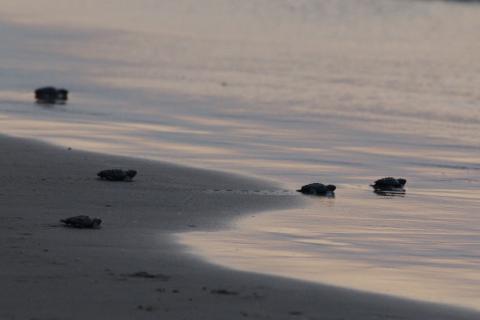To support restoration planning and evaluation of restoration effectiveness, the Open Ocean Trustees have approved three new Monitoring and Adaptive Management (MAM) activities.
The activities support the Open Ocean MAM goals (PDF, 23 pages) of evaluating the outcomes of Open Ocean restoration, identifying data gaps, and identifying the benefits of restoration to natural resources and the ecosystem. All of the activities pull together existing data to guide the Trustees’ restoration decisions.
The total estimated budget for these activities is $1.5 million. Work begins this year and is estimated to conclude in 2025.
Conceptual Model to Inform Open Ocean Ecosystem Indicators
This first activity will organize what we know and don’t know about how Open Ocean restoration activities affect open ocean species such as sea turtles, fish, and seabirds, as well as their habitats.
The model will illustrate:
-
Linkages among these resources and habitats
-
Threats that are a focus of the Trustees’ restoration work in the open ocean,
-
Specific restoration actions, and
-
Outside forces that could affect restoration outcomes.
This effort will help the Trustees refine ecosystem-level restoration objectives and indicators.
Analysis of Open Ocean Habitat Use, Threats, and Animal Movement
The second activity will identify areas of overlap between open ocean species, their habitats (including migration corridors), and threats that affect them. This will help the Trustees identify locations where threat reduction projects may have a greater impact, due to the presence of multiple resources.
This activity will also help the Trustees evaluate whether implemented restoration projects have reduced threats to natural resources and their habitats. Information obtained from this activity will be incorporated into the conceptual model mentioned above.
Gulf-Wide Status of Nesting Sea Turtles and Beaches Data Inventory
The third activity will assess existing data about nesting sea turtles across the Gulf of Mexico to determine the additional data needed to plan restoration and evaluate restoration progress. The activity will focus on data about adult nesting females and the nesting beach environment for four species: loggerhead, Kemp’s ridley, green, and leatherback sea turtles.
Together, these monitoring and adaptive management activities will identify additional information needed for restoration planning, guide the Trustees’ restoration decisions, and assist with the evaluation of restoration progress.
Get future updates delivered directly to your inbox. Subscribe today for Gulf Spill Restoration news and updates.


